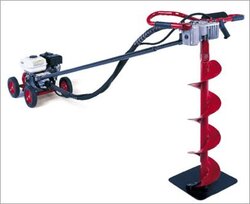Last fall's garden fence project has turned into a spring project. Funny how that works.
I'm building a 48x56 fenced area. Job 1 is to keep the garbage-gut dog out. His appetite knows no bounds. Job 2 is to keep deer to a minimum. I know I can't totally beat them.
I bought treated posts 6x6x8 for corners and gate, 4x4x8 for runners. I'm going to bury the posts about 24" and put some welded wire 4 ft and then a couple courses of smooth galv above that.
Although I've built miles of cattle fence in my day, I've always used a post driver. I'm ashamed to admit that I've never dug/drilled a hole and buried a post. Some say dump a bag of dry concrete in...other say tamp with dirt...other say pea gravel.
Not sure who to believe. Any advice?
I'm building a 48x56 fenced area. Job 1 is to keep the garbage-gut dog out. His appetite knows no bounds. Job 2 is to keep deer to a minimum. I know I can't totally beat them.
I bought treated posts 6x6x8 for corners and gate, 4x4x8 for runners. I'm going to bury the posts about 24" and put some welded wire 4 ft and then a couple courses of smooth galv above that.
Although I've built miles of cattle fence in my day, I've always used a post driver. I'm ashamed to admit that I've never dug/drilled a hole and buried a post. Some say dump a bag of dry concrete in...other say tamp with dirt...other say pea gravel.
Not sure who to believe. Any advice?


